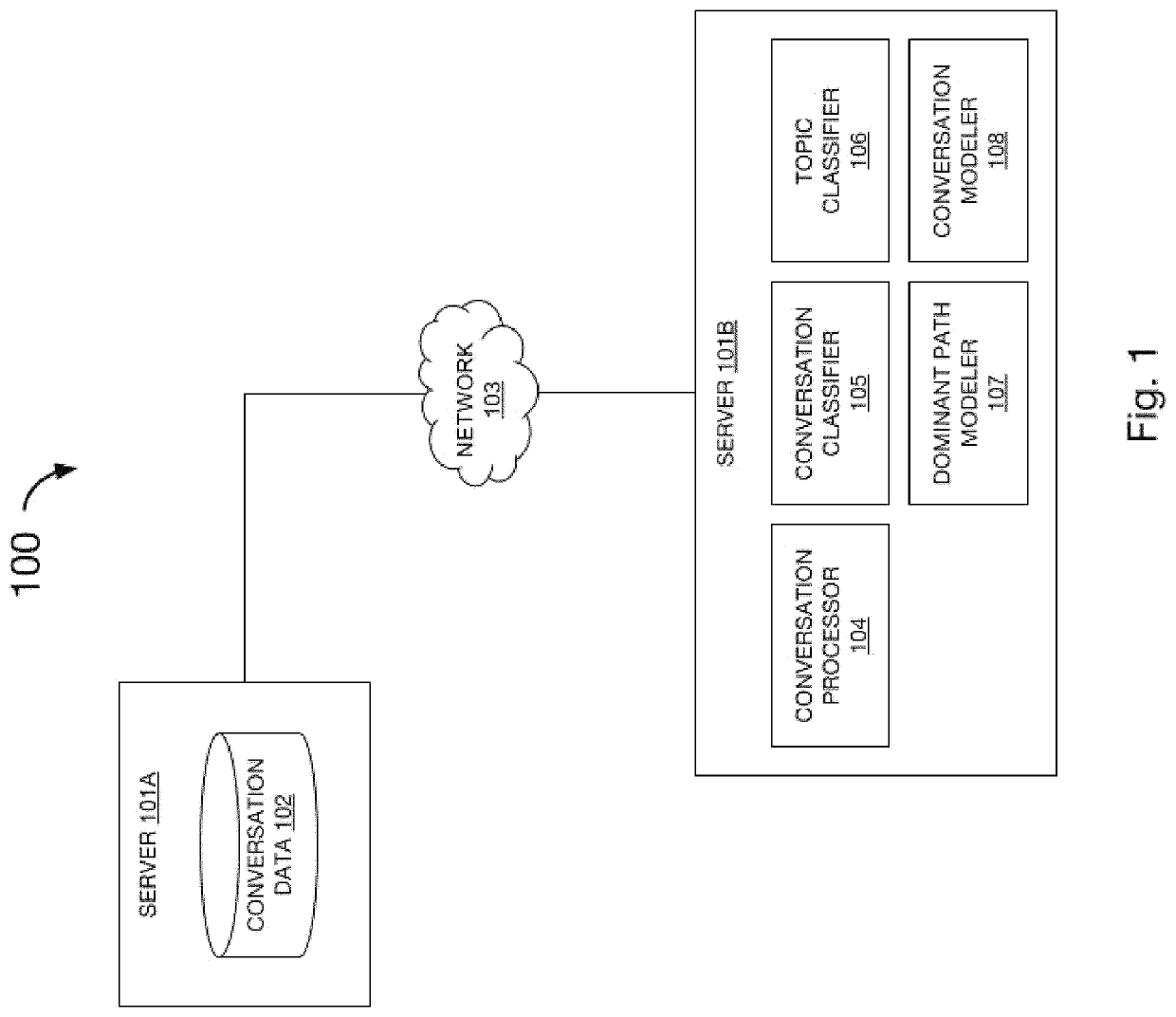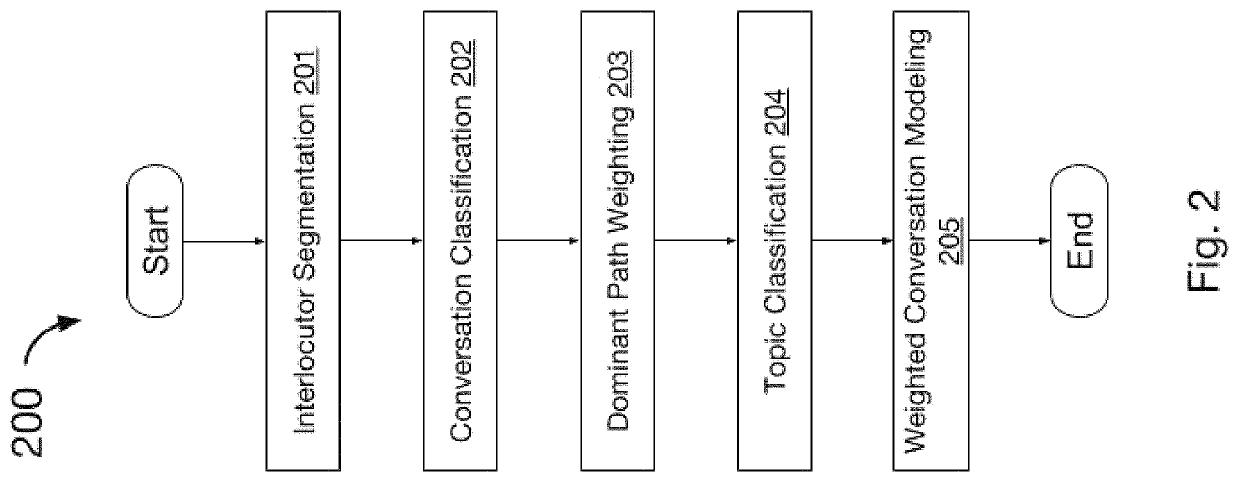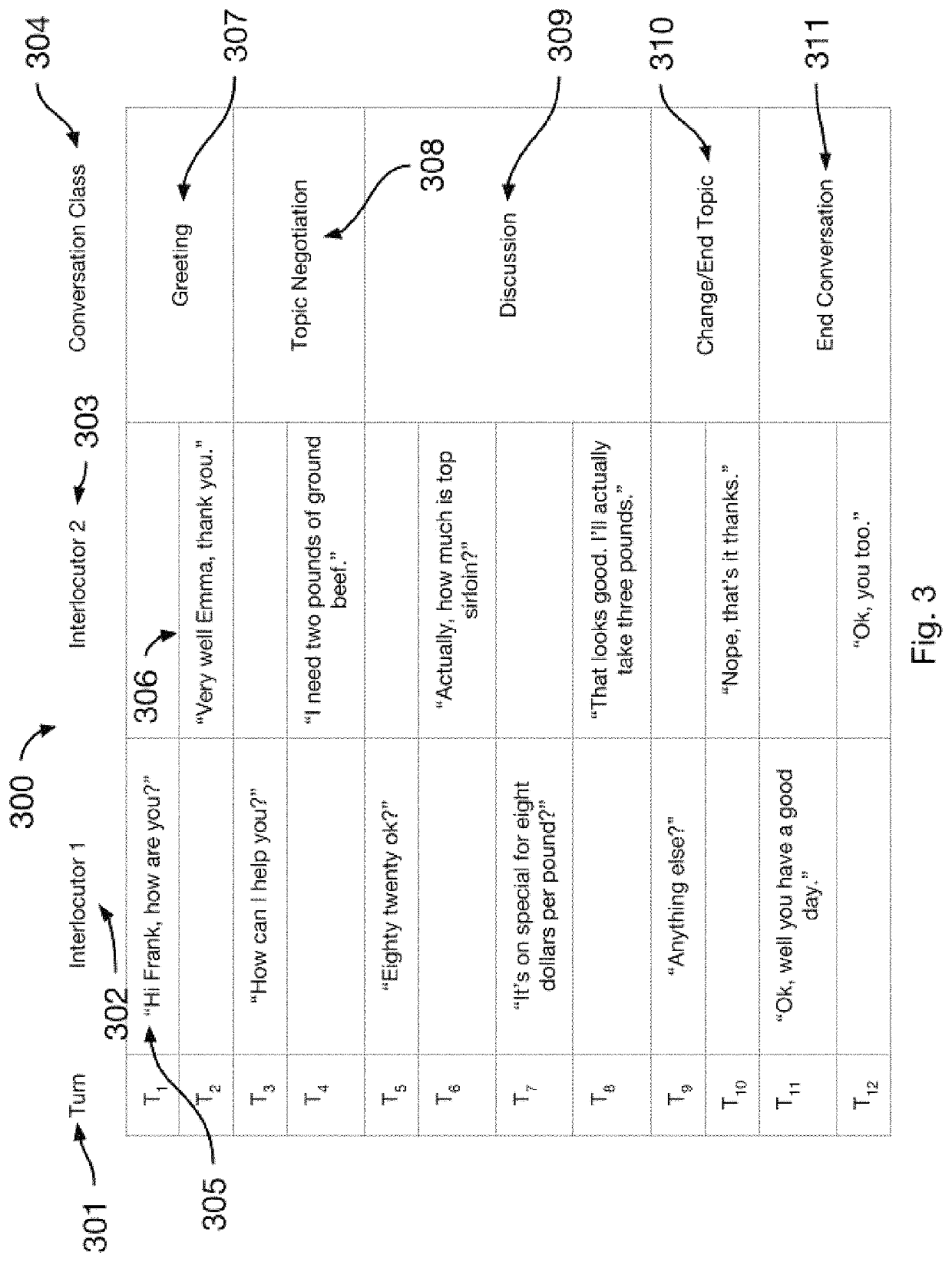Computer-based interlocutor understanding using classifying conversation segments
a technology of conversation segments and computer-based interlocutor, applied in the field of computer-based interlocutor understanding using classifying conversation segments, can solve problems such as frustration, errors, delays, and inability to offer a natural conversational interface, and achieve the effect of reducing the number of customers, reducing the number of interactions, and improving the understanding of the conversation
- Summary
- Abstract
- Description
- Claims
- Application Information
AI Technical Summary
Benefits of technology
Problems solved by technology
Method used
Image
Examples
Embodiment Construction
[0004]Computer-based natural language understanding of input and output for a computer interlocutor is improved using a method of classifying conversation segments from transcribed conversations. The improvement includes one or more methods of splitting transcribed conversations into groups related to a conversation ontology using metadata; identifying dominant paths of conversational behavior by counting the frequency of occurrences of the behavior for a given path; creating a conversation model comprising conversation behaviors, metadata, and dominant paths; and using the conversation model to assign a probability score for a matched input to the computer interlocutor or a generated output from the computer interlocutor.
BRIEF DESCRIPTION OF THE DRAWINGS
[0005]The figures presented herein, when considered in light of this description, form a complete disclosure of one or more embodiments of the invention, wherein like reference numbers in the figures represent similar or same elemen...
PUM
 Login to View More
Login to View More Abstract
Description
Claims
Application Information
 Login to View More
Login to View More - R&D
- Intellectual Property
- Life Sciences
- Materials
- Tech Scout
- Unparalleled Data Quality
- Higher Quality Content
- 60% Fewer Hallucinations
Browse by: Latest US Patents, China's latest patents, Technical Efficacy Thesaurus, Application Domain, Technology Topic, Popular Technical Reports.
© 2025 PatSnap. All rights reserved.Legal|Privacy policy|Modern Slavery Act Transparency Statement|Sitemap|About US| Contact US: help@patsnap.com



